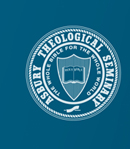Abstract
This article reflects on communicating the Christian gospel appropriately and effectively among Southeast Asian Theravada Buddhists (SEATB). It is concerned with contextualizing the means of communication rather than theological concepts. Contextualization is often discussed with little reference to the level of contextualization, including: the content of the gospel, liturgical forms, social rules for relating, and dispositions shaped by Buddhist virtues used in communication. Examples are given of contextualization among SEATB, and then descriptions of how communicators of the gospel can use dispositions shaped by key Buddhist virtues. An argument is made that among SEATB, the means of communicating the gospel is often far more important than the content of the gospel. This suggests that communicators of the gospel would do well to become competent in communicating in ways that reflect the local rules for relationships and by appropriating nonverbals that communicate dispositions of Buddhist virtue.
DOI
DOI: 10.7252/Journal.02.2023F.02
Recommended Citation
Bailey, Stephen
(2023)
"Dispositions for Christian Witness Among Theravada Buddhists,"
The Asbury Journal:
Vol. 78:
No.
2, p. 259–278.
Available at:
https://place.asburyseminary.edu/asburyjournal/vol78/iss2/3
Included in
Biblical Studies Commons, Christian Denominations and Sects Commons, Missions and World Christianity Commons

